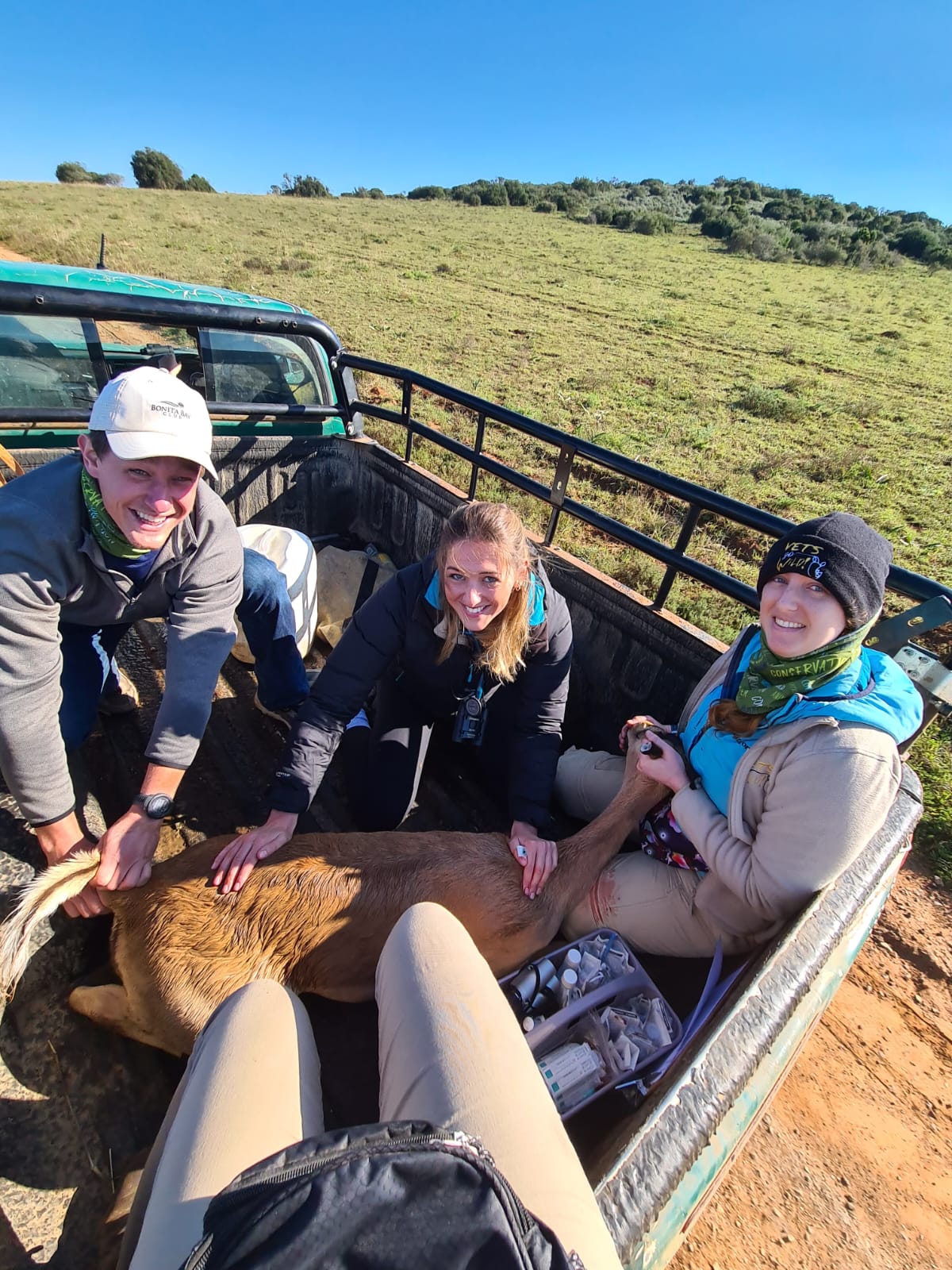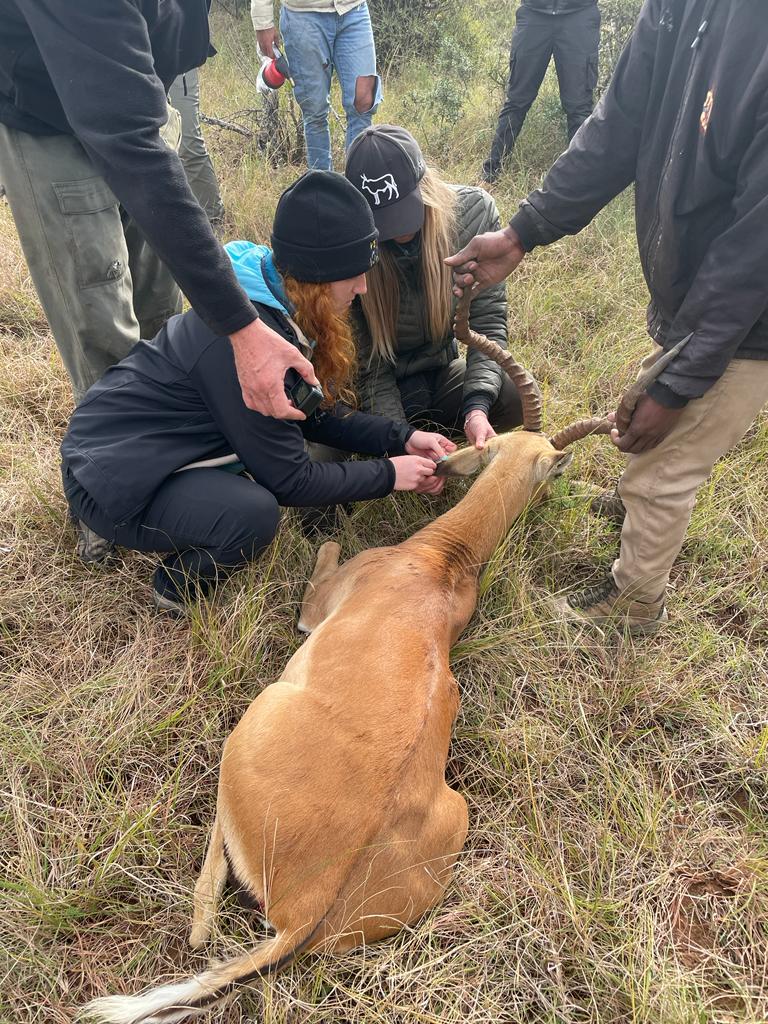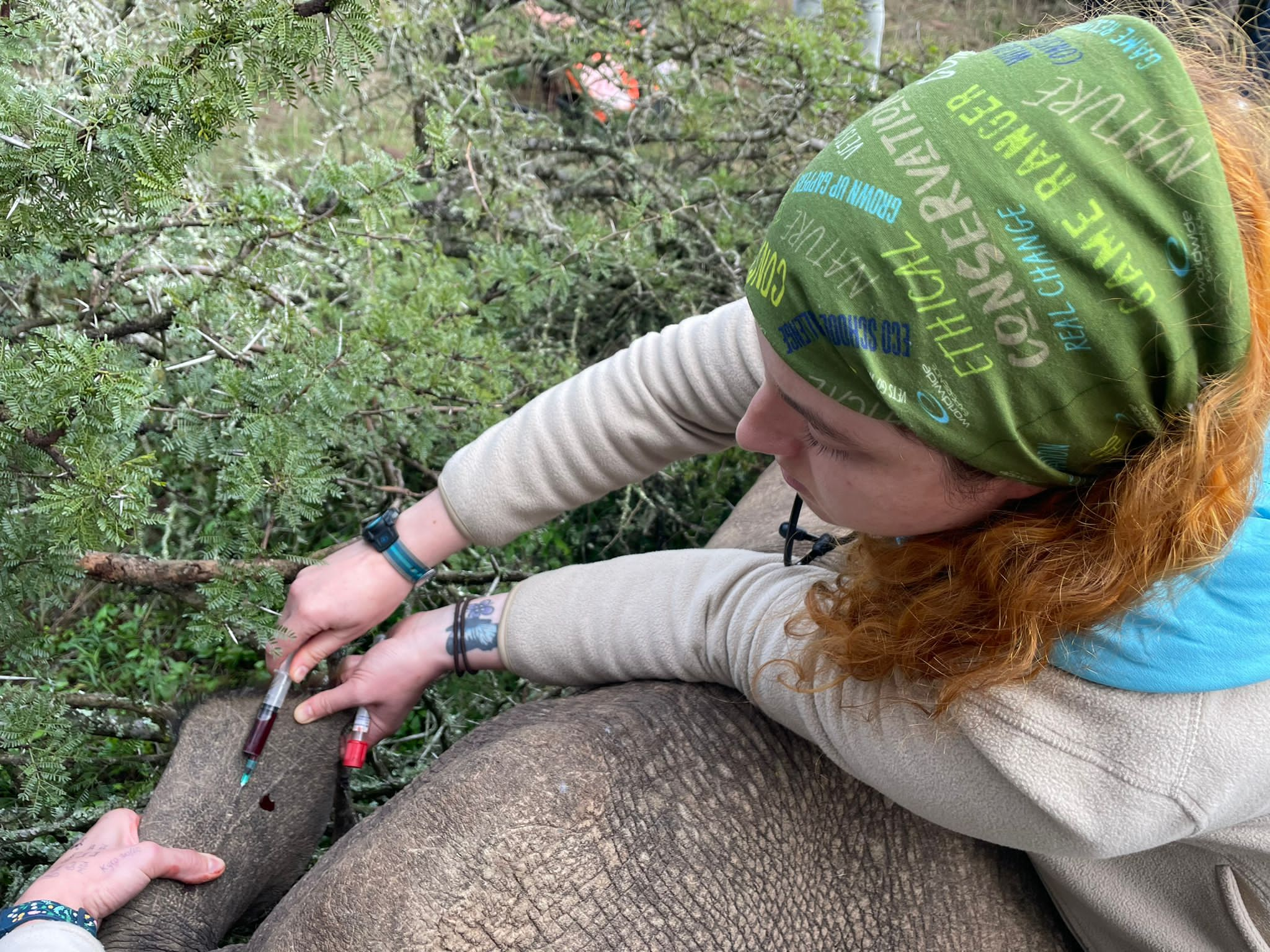Shannon Cook
Vets Go Wild is a 16-day course about wildlife medicine in the Eastern Cape of South Africa. During the course, I attended lectures with my 11 classmates and then we applied the knowledge gained from those lectures out in the field when we immobilized wildlife for transport to other game reserves. The lecture topics included pharmacology, anesthesia for different groups of animals, current conservation issues faced by wildlife in the Eastern Cape, and the role of veterinarians in wildlife conservation.
Prior to each immobilization, we discussed our planned drug protocol including the types of drugs we intended to use, their pros and cons, and dosages. We also discussed how to restrain and position the animal once it had been darted and how to transport it. The animals we immobilized included red hartebeest, impala, zebra, cape buffalo, roan, sable, giraffe, rhino, and water buck. Each species required a slightly different drug protocol based on its size, temperament, and response to the drugs. After our lead veterinarian, Dr. Fowlds, had darted the animal, we were responsible for monitoring it, including taking vitals once the animal was down, and administering treatments such as vitamin supplements and parasite preventatives. During these immobilizations, I learned how to monitor respiration and heart rate of large wildlife, estimate oxygen saturation from blood color, and draw blood from ear veins. We also administered the anesthetic reversal drugs once the animal had been moved to a trailer.


My experience in South Africa allowed me to work with animals I would never have access to in the United States and learn about their species-specific immobilization protocols based on their unique anatomy and physiology. For example, due to their high blood pressure, giraffe must be reversed as soon as they are down and then restrained by people laying on their neck. On the last day of the course, we had a practical “exam” for which we were divided into groups of three with each group assigned to a single water buck. Using our knowledge and experience, we designed our own drug protocols and researched anticipated complications we could expect for the species. My group’s water buck ran up the side of a mountain after being darted, making it more difficult to transport it back to the trailer. Our plan to walk the sedated animal down the mountain was unsuccessful and we instead had to use a stretcher to carry the water buck down the mountain. While our plan did not go as smoothly as expected, it taught me how to address complications and to be flexible.
My time in South Africa also exposed me to a completely new and different culture. We went on game drives almost every day which were led by incredibly knowledgeable guides who taught us about the local ecosystem and conservation in South Africa. Interacting with South Africans helped me better understand the social issues people face in their daily lives and especially how that intersects with their natural resources. Overall I had an amazing time learning about unique wildlife species, conservation medicine, and life in South Africa.

